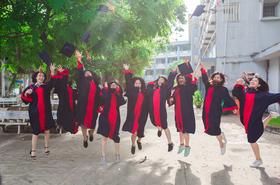- Amarillo College, a public community college, is dedicated to providing educational, cultural and community services and resources to enhance the quality of life for the diverse population in the service area.
School Highlights
Amarillo College serves 11,564 students (35% of students are full-time).
The college's student-teacher ratio of 16:1 is lower than the state community college average of 23:1.
Minority enrollment is 60% of the student body (majority Hispanic), which is less than the state average of 74%.
Quick Facts (2025-26)
- Enrollment: 11,564 students
- In-state tuition: $2,898
- Out-state tuition: $4,362
- Student-teacher ratio: 16:1
- Minority enrollment: 60%
- Source: Verified school update
Top Rankings
Amarillo College ranks among the top 20% of public schools in Texas for:
Category
Attribute
Community Size
School Overview
The teacher population of 745 teachers has stayed relatively flat over five years.
Amarillo College
(TX) Community College Avg.
Carnegie Classification
Associate's Colleges: Mixed Transfer/Career & Technical-High Traditional
Baccalaureate/Associate's Colleges: Associate's Dominant
Institution Level
At least 2 but less than 4 years
At least 2 but less than 4 years
Institution Control
Public
Public
Total Faculty
745 staff
262 staff
School Calendar
Student Body
The student population of Amarillo College has grown by 18% over five years.
The student-teacher ratio of 16:1 has increased from 12:1 over five years.
The Amarillo College diversity score of 0.63 is less than the state average of 0.70. The school's diversity has stayed relatively flat over five years.
Total Enrollment
11,564 students
4,931 students
Student-Teacher Ratio
16:1
23:1
# Full-Time Students
4,099 students
909 students
# Part-Time Students
7,465 students
4,022 students
# Enrollment Undergraduate
115 students
403 students
# Full-Time Undergraduate Students
4,099 students
890 students
# Full-Time Graduate Students
n/a
40 students
# Part-Time Undergraduate Students
7,465 students
4,166 students
# Part-Time Graduate Students
n/a
47 students
Total Dormitory Capacity
n/a
252 students
% American Indian/Alaskan
1%
n/a
% Asian
3%
6%
% Hispanic
45%
46%
% Black
6%
13%
% White
40%
26%
% Hawaiian
n/a
n/a
% Two or more races
3%
3%
% Non Resident races
n/a
2%
% Unknown races
2%
4%
Diversity Score
0.63
0.70
College Completion Rate (Students who graduate in less than 4 years)
28%
55%
College Completion Rate (Students who graduate in 4 years or more than 4 years)
n/a
34%
Average Graduate Earnings (10 Years)
$35,900
$34,600
Tuition and Acceptance Rate
The public in-state tuition of $2,898 is less than the state average of $3,764. The in-state tuition has declined by 8% over four years.
The public out-state tuition of $4,362 is less than the state average of $6,054. The out-state tuition has declined by 7% over four years.
In-State Tuition Fees
$2,898
$3,764
Out-State Tuition Fees
$4,362
$6,054
% Students Receiving Some Financial Aid
90%
84%
Median Debt for Graduates
$14,894
$10,765
Median Debt for Dropouts
$8,818
$5,500
Acceptance Rate
n/a
84%
Source: 2024 (or latest year available) Integrated Postsecondary Education Data System (IPEDS)
School Notes
- On July 16, 1929, Amarillo College became the first junior college district in the state to be organized independent of a school district. The first classes were held in September 1929. The College moved to its present location with the construction of its first permanent building in 1937. After serving primarily as a junior college offering arts and sciences courses, the curriculum was expanded in 1942 to include vocational courses. In 1958, Amarillo College was granted its own board of regents independent of the trusteeship of the Amarillo Independent School District. The 1960s brought expansion in College facilities and programs. A number of allied health and occupational-technical programs were added to the curriculum along with an extensive array of continuing education and community service courses. In 1995, state legislation transferred Texas State Technical College - Amarillo to AC. Today, the East Campus (formerly Amarillo Technical Center) continues a 25-year history of meeting the region's technical education needs. As your community college, Amarillo College works hard to bring you high-quality academic and technical programs, plus hundreds of continuing education programs. We offer affordable tuition, and small classes when you want them - morning, afternoon, evening, or weekends. Our technical programs provide guaranteed training in fields where job prospects are good and there is the most long-term need for qualified personnel. AC is an ideal place to begin your college career. Our transfer programs let you complete the first two years of a bachelor's degree–conveniently and at a low cost. Amarillo College offers three associate degrees and various certificates of completion. Generally, students completing 15 semester credit hours each semester will be able to complete a certificate of completion within one academic year and an associate degree in two academic years. Amarillo College is accredited by the Commission on Colleges of the Southern Association of Colleges and Schools to award associate of arts degrees, associate of science degrees, associate of applied science degrees and certificates of completion.
Frequently Asked Questions
How much does Amarillo College cost?
Amarillo College's tuition is approximately $2,898 for In-State students and $4,362 for Out-State students.
What is Amarillo College's ranking?
Amarillo College ranks among the top 20% of community college in Texas for: Largest student body.
Recent Articles

How to Transfer from Community College to a Four-Year University in 2025
A step-by-step guide for community college students transferring to a four-year university in 2025 — updated strategies, data and expert insights.

Scholarships for Community College Students 2025
Explore updated scholarship programs, tuition data, and expert strategies for community college students in 2025.

The Rise of Technical and Vocational Training in 2025
Explore the 2025 surge in technical and vocational training—enrollment, policy, costs, and why this path is gaining ground for students and parents.









